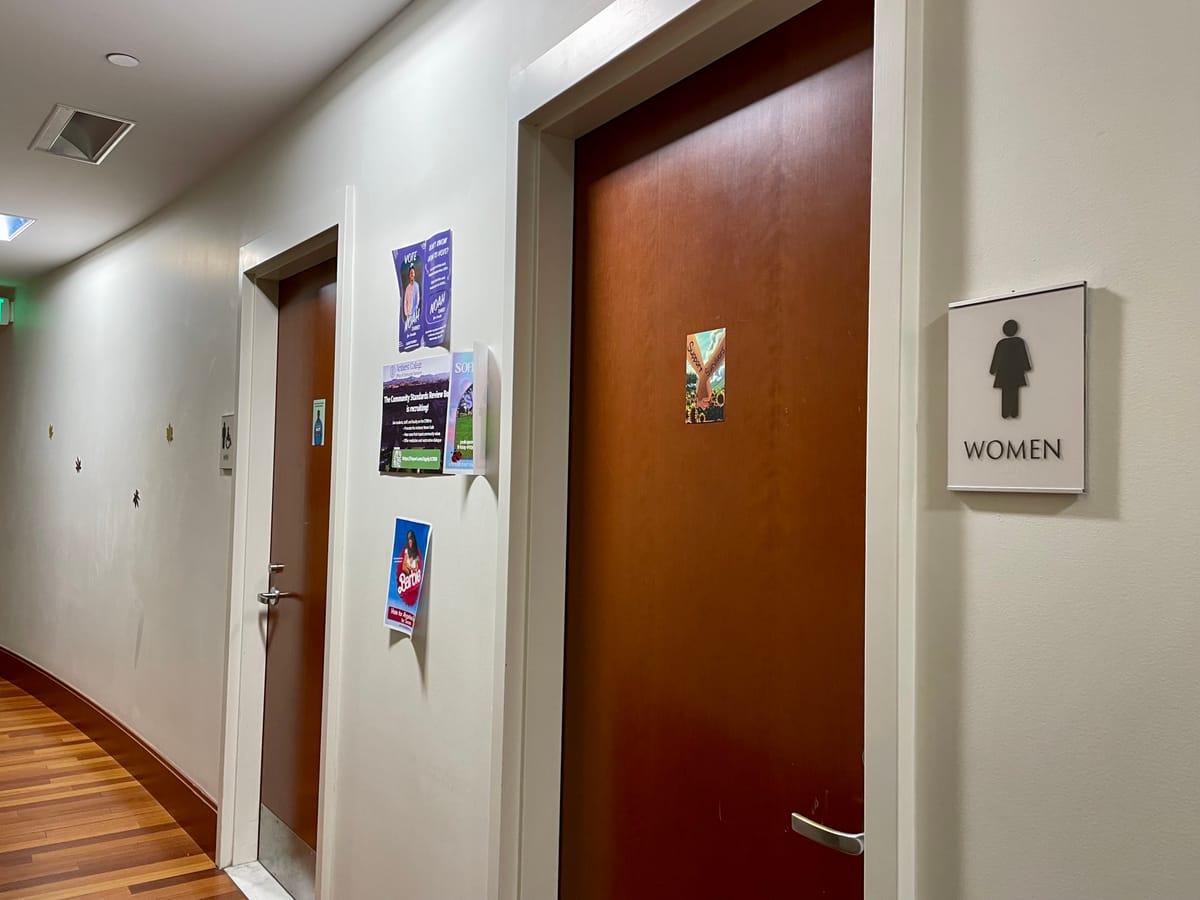College Restricts Gender Redesignation of Dorm Bathrooms
Residential Engagement and Wellbeing reinforced that changes to the gender designations of dorm bathrooms will be prohibited this year, creating difficulties for students who now must travel across or between floors to access gender-neutral bathrooms.

A senior living in Wieland Hall, immediately knew that they needed a gender-neutral bathroom upon returning to campus for the new school year. The student, who identifies as transgender, contacted his community advisor (CA), Community Development Coordinator (CDC), and the Office of Student Affairs (OSA) because there was no gender-neutral bathroom on his floor.
The gender designations of bathrooms in residence halls cannot be changed, with some exceptions, according to an announcement at a weekly meeting for CAs on Sept. 5, handed down from the Residential Engagement and Wellbeing Team at the OSA, several CAs told The Student.
“We weren’t really given a clear reason,” the student said. “I was very upset. Amherst College is diverse and accepting for the most part, but when it comes to implementing things that allow for their students to feel comfortable, they’re a bit slow on the uptake.”
The current practice has formally been in place for a full year, according to a statement from Associate Director of Residential Engagement and Wellbeing Bridget Mearns Bucey and Director of Housing and Operations Marie Lalor.
“Housing & Operations, Residential Engagement & Wellbeing, Accessibility Services, Religious & Spiritual Life, and the Queer Resource Center actively use [bathroom designations] in supporting students. Additionally, when students select their rooms in the Housing Selection Process in the spring, they often do so based on the knowledge that the restroom designations are set for the following academic year. We have a responsibility to those students to maintain the environment they selected,” the statement said.
In the past, CAs have changed bathroom designations based on floor-wide votes and requests, generally covering up the previously existing signs with new paper signs.
“I don’t think they expected as much pushback as they’re getting,” said Anika Grimsrud ’24, who is starting their third year as a CA.
The Residential Engagement and Wellbeing Team sent a follow-up email to CAs on Sept. 14, clarifying the policy.
“Whenever possible we have women’s, men’s, and gender-inclusive restrooms for students in each building and spaced throughout the floors in multi-floor buildings,” the statement said.
Grimsrud, who identifies as non-binary, said that “the biggest problem is that there are not enough gender-neutral bathrooms and it’s not fair to make people who don’t feel comfortable in a binary bathroom go to another floor to shower. That’s ridiculous.”
The anonymous student has access to gender-neutral bathrooms on the floors above and below him.
“I’ve been using those bathrooms and at the beginning of the year, I talked to a few people on those floors and I was like, ‘Hey, would anyone be willing to switch with me?’” the student said. “But then I was left to either move to Plimpton or Tyler or stay in a place with no gender-neutral bathrooms.”
The student turned to the QRC and filed a diversity complaint. The email that was sent back to them on Sept. 5 conveyed that because there were already two gender-inclusive restrooms in the residence hall, they weren’t able to add another. The statement added that some students needed men or women designated restrooms for religious and other reasons, so they could not make further changes to the building.
“We have students whose faith practices restrict their usable restrooms to those with gender designations that match their own gender. Many of these students elect to live on a single-gender floor, but many also do not — knowing that the floor they have selected offers a restroom that meets their needs,” the statement from Mearns Bucey and Lalor said.
Angie Lopez ’26, a first-year quad CA for James Hall said the decision was hard because “people come to college and explore who they are, especially if they can’t do that at home … A welcoming environment can mean a lot for those people and two binary bathrooms are restrictive.”
On Lopez’s floor, there are residents who identify as non-binary, so she made a paper sign changing a single-gender restroom to gender-inclusive following a floor vote.
The Residential Engagement and Wellbeing Team wrote: “While a vote seems like a good method of gaining consensus, in a community as small as ours, students have expressed that they felt like they needed to follow the pressure of the rest of the community and are unsettled by the changes.”
They added that there are financial and administrative costs associated with these changes.
“Between the signage and labor costs, every restroom sign we change costs about $100. The cost is not prohibitive, but it is worthy of consideration in the larger picture. As an example, with the increased demand for single-gender floors from the new student cohort, we’ve designated several restrooms as men’s or women’s on the first-year quad to accommodate the demand,” the statement from Mearns Bucey and Lalor said.
When Lopez was originally asked to remove the signs, she left them up for a few weeks, and no one came to take them down.
After another CA meeting reiterated a need to remove redesignated bathroom signs, “I went ahead and removed my sign but our bathrooms continue to be gender-neutral and binary female, even without the sign,” Lopez said. “It’s frustrating because a CA’s job is to create a welcoming environment and this doesn’t make sense.”
Correction, April 23, 2024: This article has been updated to redact the name of a student, as new circumstances could lead to retribution against them.





Comments ()